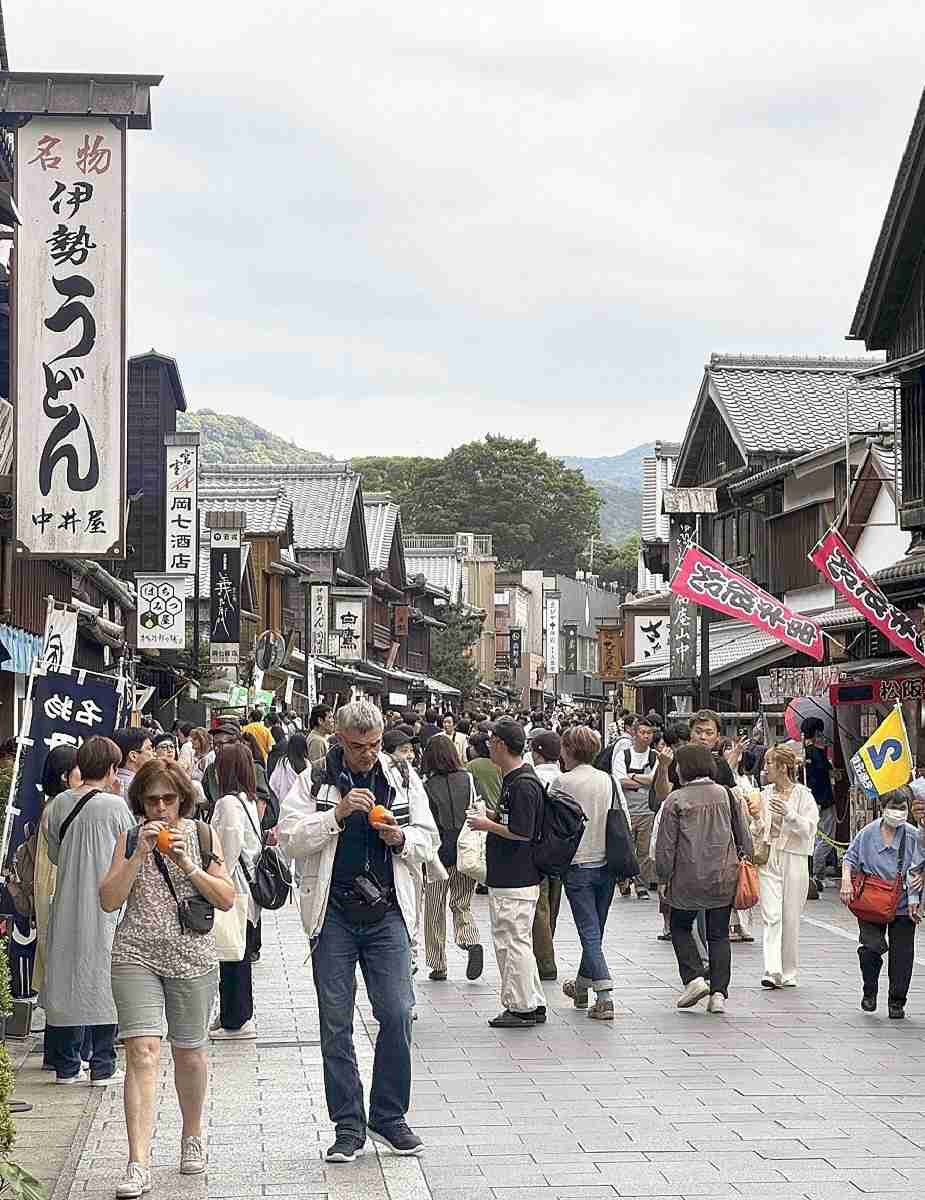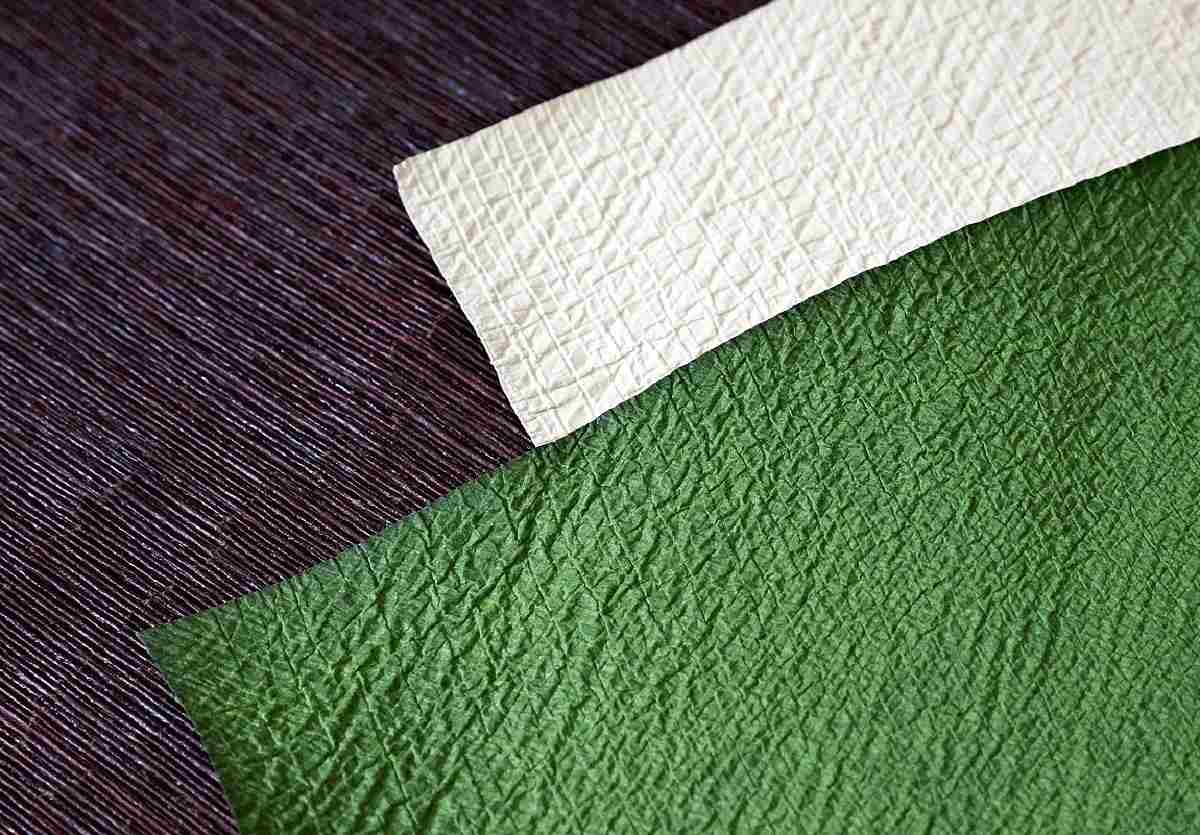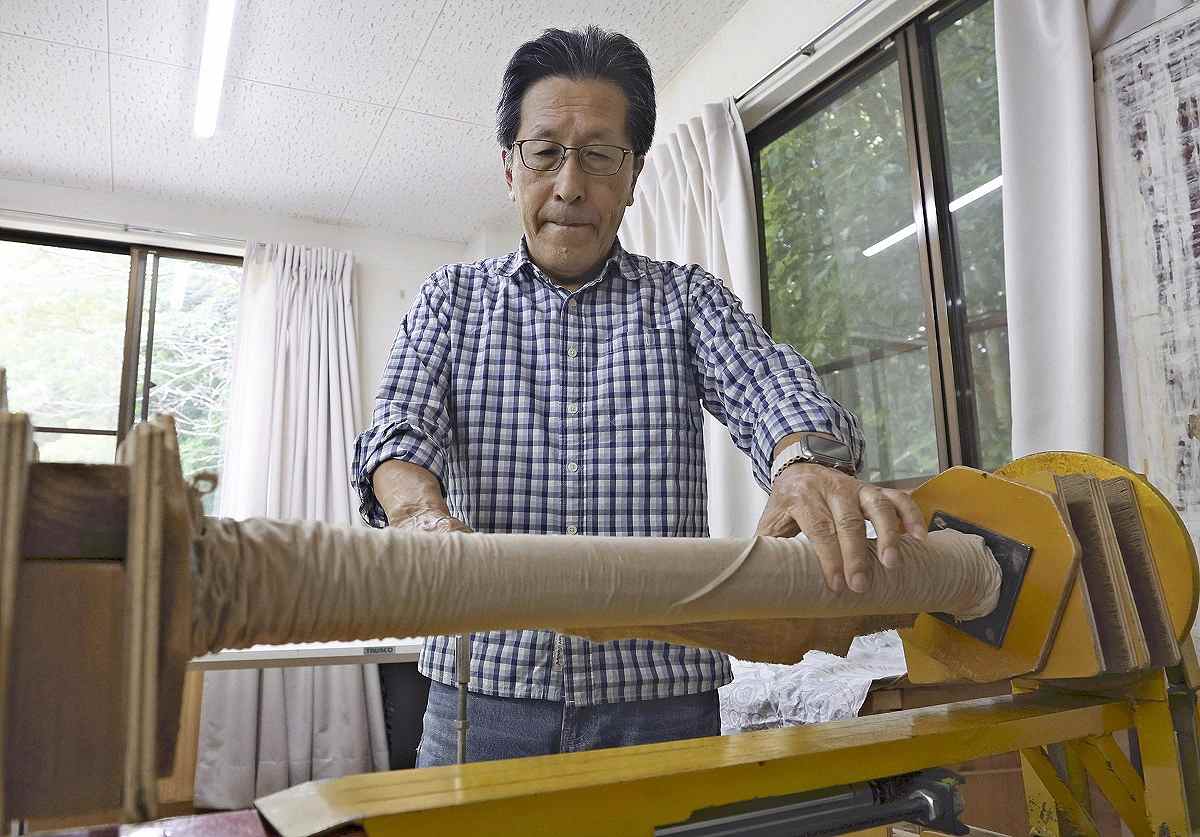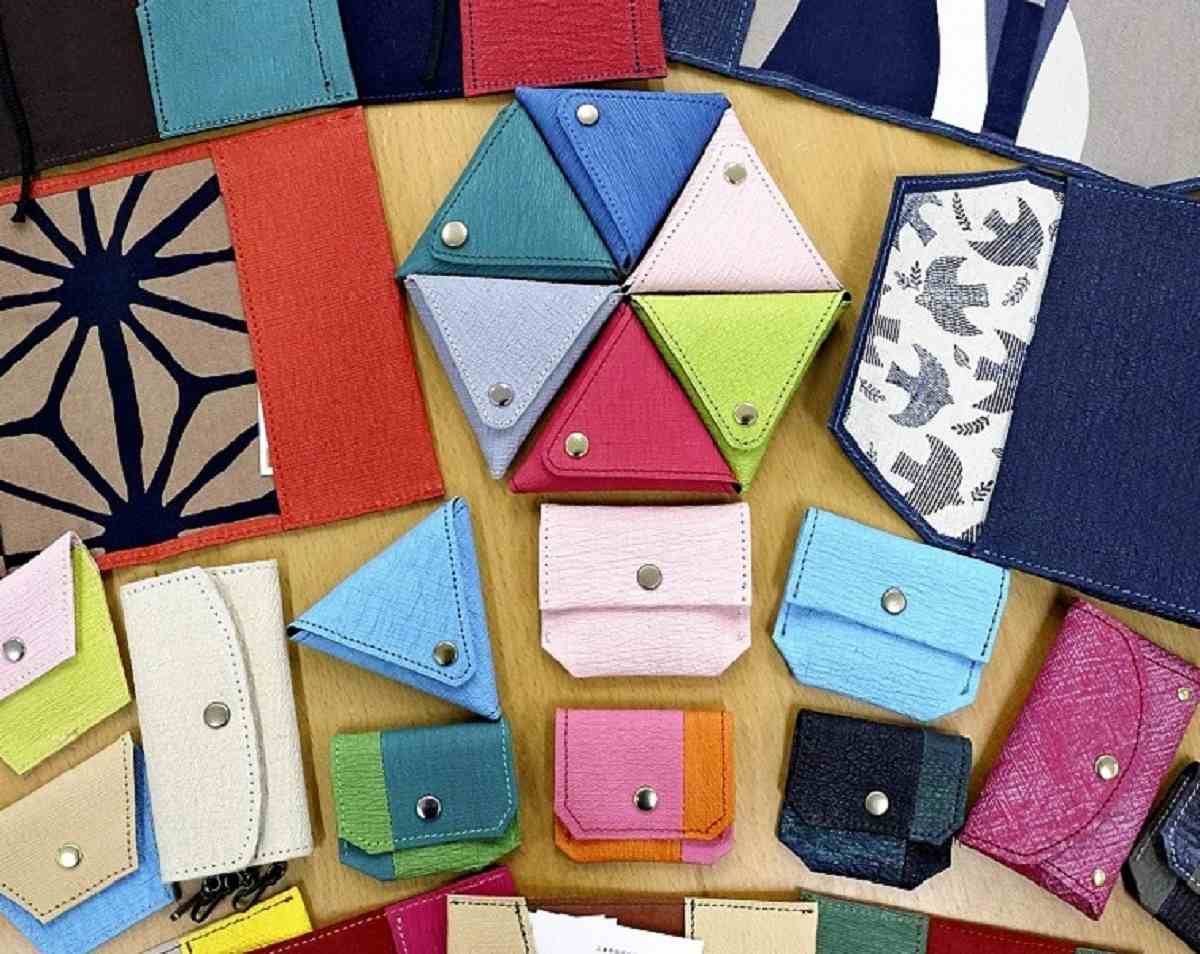Reviving Gikakushi Fake Leather Production; Mie Pref. Man Reinvents Traditional Crafting Techniques

Gikakushi in different colors. Each sheet has a different surface texture
11:30 JST, September 2, 2024

The area around the Ise Grand Shrines still attracts many worshippers.
Gikakushi is a kind of fake leather that looks and feels like the real thing but is actually made of Japanese washi paper crafted to look and feel like real leather. It is tough and becomes glossier and more beautiful as it is used.
In the Edo period (1603-1867), taking a trip to the Ise Grand Shines was a major event for ordinary people. Tabako-ire (tobacco pouches) were popular souvenirs of the journey, and these products were typically made from gikakushi.
The production of gikakushi in the area around the shrines ceased in the early years of the Showa era (1926-89). Recently, a man from a former gikakushi-making family revived their lost production techniques after three years of trial and error.

The two sheets of paper on the right are gikakushi, which has the look and feel of real leather. The brown paper underneath is a mold.
Gikakushi has an uneven surface and fine wrinkles running in various directions. Looking at it, it is hard to believe that it is actually washi paper. It is soaked in konjac glue, making it tough and hard to tear.
“Gikakushi is said to have been invented in the early Edo period by Chujiro Horiki, who ran a store in the village of Shinchaya (a part of present-day Meiwa, Mie Prefecture) along the Ise Highway [leading to the Ise Grand Shrines],” said Shigeru Horiki, 75, explaining his ancestors’ business.
Chujiro noticed that “abura-gami” (oil paper), washi paper that had absorbed oil, developed a leather-like texture the longer it was used. He improved the oil paper to create gikakushi.
“Around that time, oil paper was a material used to make raincoats. It was highly waterproof, so tobacco pouches made of gikakushi had the advantage of protecting the contents from moisture,” Horiki said.
Overwhelmed by real leather
These tobacco pouches were used to carry chopped tobacco leaves to fill a kiseru (Japanese smoking pipe). Many smokers in the Edo period kept these with them all the time.
“The materials for tobacco pouches varied, including gikakushi and cloth. Some people spent a lot of money to get elaborate custom-made products. They were also a fashion accessory,” said Ami Nishida, 39, a curator at the Tobacco & Salt Museum in Sumida Ward, Tokyo.
They became popular as souvenirs from Ise because “the paper was light and not bulky, so it would have been suitable for giving to neighbors,” Nishida said.
Gikakushi was exported to European countries and the United States as wallpaper during the Meiji era (1868-1912). However, its production in the Ise area was discontinued in the early Showa era, partly because real leather became more readily available in Japan.
Horiki says that he did not know much about his family business in the past, as he was a company employee.
“When we dismantled an old family warehouse, I was surprised to find many sheets of gikakushi and tools to make it in there,” he said. “For a while I was just keeping them safe, but I decided I wanted to be the one to revive the family business. So in 2003, when I was 53, I left the company I was working for.”
As there were no documents recording the original production techniques, Horiki visited paper stores and museums many times with old gikakushi samples to ask how the paper was made. After three years of trial and error, he was finally able to revive its production.
Coin purses and wallets


Top: Shigeru Horiki at work. He applies pressure to both ends of the washi paper, which is rolled after being sandwiched between pattern sheets. Bottom: Gikakushi is used to make business card holders, dust jackets, wallets and other items
Horiki developed the following production technique: First, washi paper is roughly wrinkled and then dyed navy blue, red or other colors. Next, the paper is sandwiched between leather-patterned paper molds, and pressure is applied with a machine to make the paper surface uneven. Pressure is applied several times in the same way. Then, the paper is dyed again, has konjac glue applied to its back side, and is polished using a glass plate to give it a smooth finish.
The paper is now produced by the Sangu Brand Gikakushi no Kai, an organization formed by Horiki and other people with similar interests. The gikakushi itself is sold as a finished product and is also used to make coin purses and wallets. They are sold at various places, including stores in the prefecture.“When you apply leather cream to the paper, it becomes soft and glossy,” Horiki said. “You can enjoy polishing up its appearance and texture. I hope this paper will be used in a variety of products and become a major product of Ise once again.”
"Society" POPULAR ARTICLE
-

M4.9 Earthquake Hits Tokyo, Neighboring Prefectures
-

Israeli Tourists Refused Accommodation at Hotel in Japan’s Nagano Pref., Prompting Protest by Israeli Embassy and Probe by Prefecture
-

M7.5 Earthquake Hits Northern Japan; Tsunami Waves Observed in Hokkaido, Aomori and Iwate Prefectures
-

Tsukiji Market Urges Tourists to Avoid Visiting in Year-End
-

M5.7 Earthquake Hits Japan’s Kumamoto Pref., Measuring Upper 5 Intensity, No Tsunami Expected
JN ACCESS RANKING
-

Keidanren Chairman Yoshinobu Tsutsui Visits Kashiwazaki-Kariwa Nuclear Power Plant; Inspects New Emergency Safety System
-

Imports of Rare Earths from China Facing Delays, May Be Caused by Deterioration of Japan-China Relations
-

University of Tokyo Professor Discusses Japanese Economic Security in Interview Ahead of Forum
-

Tokyo Economic Security Forum to Hold Inaugural Meeting Amid Tense Global Environment
-

Japan Pulls out of Vietnam Nuclear Project, Complicating Hanoi’s Power Plans






















